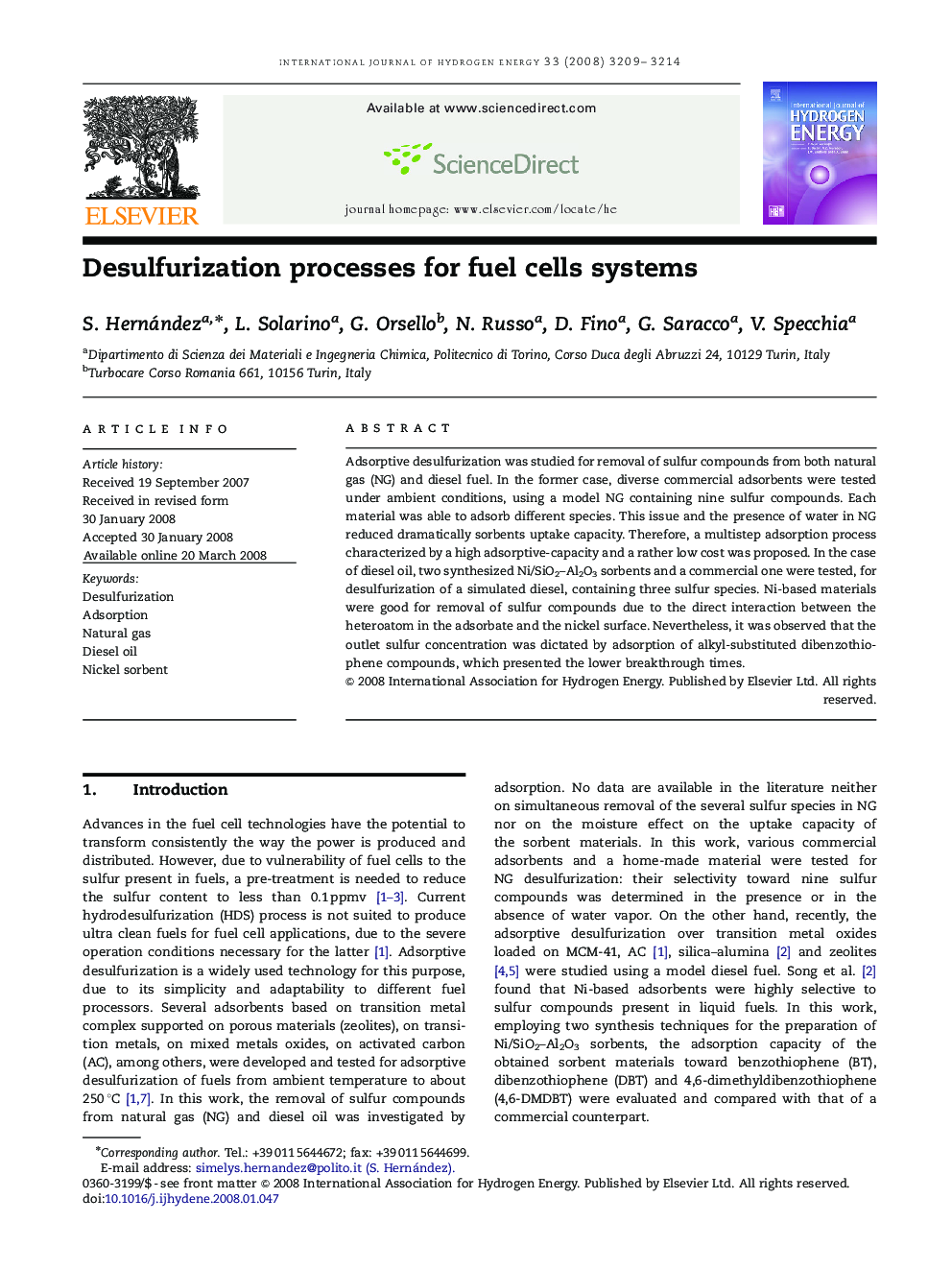| Article ID | Journal | Published Year | Pages | File Type |
|---|---|---|---|---|
| 1279631 | International Journal of Hydrogen Energy | 2008 | 6 Pages |
Adsorptive desulfurization was studied for removal of sulfur compounds from both natural gas (NG) and diesel fuel. In the former case, diverse commercial adsorbents were tested under ambient conditions, using a model NG containing nine sulfur compounds. Each material was able to adsorb different species. This issue and the presence of water in NG reduced dramatically sorbents uptake capacity. Therefore, a multistep adsorption process characterized by a high adsorptive-capacity and a rather low cost was proposed. In the case of diesel oil, two synthesized Ni/SiO2–Al2O3 sorbents and a commercial one were tested, for desulfurization of a simulated diesel, containing three sulfur species. Ni-based materials were good for removal of sulfur compounds due to the direct interaction between the heteroatom in the adsorbate and the nickel surface. Nevertheless, it was observed that the outlet sulfur concentration was dictated by adsorption of alkyl-substituted dibenzothiophene compounds, which presented the lower breakthrough times.
